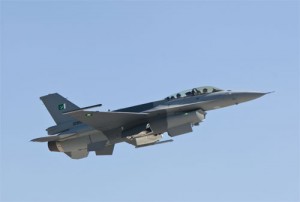
NEW YORK — A crucial defense dilemma is looming under the radar screens, both over the Taiwan Straits and the Potomac; namely seriously upgrading Taiwan’s aging jet fighter force against a fast rising military threat from Mainland China.
While Beijing’s double-digit military spending is now focusing on high-tech sophisticated fighter aircraft, tiny Taiwan still relies on increasingly outdated technology to maintain the precarious balance of power between the politically rival Chinese states.
For the longest time, Taiwan’s defense was assured by a qualitative and technologically superior edge over Mainland China’s vastly superior numbers. That advantage was largely maintained by Washington through selective weapons sales. Yet in recent years, the People’s Republic of China has been able to slowly tip the scales against Taiwan through massive military spending.

Taiwan’s military position was long akin to Israel in the Middle East, hopelessly outnumbered and outgunned by regional adversaries but holding a qualitative edge, especially in the Air Force. Taiwan is trying to purchase additional American built F-16 fighters to narrow the gap.
Taiwan’s current F-16 A/B squadrons date from the mid 1990’s. Think about it, how has your computer technology changed since 1995? Windows 95 anyone? In other words, new then, but hopelessly outdated now. Or what about a 1996 car, well maintained, high mileage? Military avionics standards have reached even higher levels and thus Taiwan’s current F-16’s are now at least a generation or two behind.
While the United States has given the green light for a $ 5.3 billion upgrade packages for the 145 ageing F-16’s, the fact remains these are older platforms being improved.
The Taipei government wants to buy an additional 66 new F-16 C/D models but has hit a roadblock from the Obama Administration who wishes not to ruffle Beijing’s feathers.
In a Lockheed memo to U.S. lawmakers, the aircraft manufacturer stressed that selling Taiwan 66 new F-16 C/D models costing $8.3 billion would benefit not only the aircraft maker, but would equally create 16,000 American jobs over a five year period.
Defense experts concur that the Republic of China on Taiwan’s Air Force needs both the F-16 upgrades as well as the new planes which the Taipei government has been trying to purchase them for the past five years.
Beijing vocally opposes the arms sales and warns that continued support of Taiwan, an island which it claims but has never ruled, will hurt relations between the People’s Republic and the USA.
Bipartisan support in Congress for the sales has been growing. Forty-seven U.S. Senators and 181 members of the House of Representatives have written to President Obama urging him to support the new fighter jet sales. Texas Republican Senator John Cornyn and New Jersey Democrat Robert Menendez, have co-sponsored legislation which would require the U.S. to sell the new aircraft to Taiwan under terms of the 1979 Taiwan Relations act which requires the U.S. to provide the island with defensive weapons. The act was passed in response to the Carter Administration’s abrogation of the U.S./ROC security treaty when Washington established full diplomatic relations with Beijing.
Currently the Republic of China’s Air Force flies the F-16’s, squadrons of equally dated French Mirage jets, and the near-antique Vietnam-era F-5’s are the mainstay of the island’s defense. Upgrading the existing fleet with new planes is a process which will take a few years; the items are not simply “off the shelf” and thus must be phased in.
The F-16 upgrades as well as new model sales should go forward for a number of reasons:
First and foremost, honoring the American commitment ensuring Taiwan’s security, serving as a deterrent to Beijing, and preserving the island’s vibrant democracy.
Second the sale sends a signal that Washington is not willing to look aside while the balance of power in East Asia continues to tip towards the People’s Republic. Regional states among the Japan, the Philippines and Korea are closely monitoring the outcome as a barometer of America’s military commitments in the Far East.
Third, both the upgrades and the sales of new aircraft would, needless to say, be good for American jobs and industry.
Maintaining America’s geo-political credibility in the Pacific, without question, remains the most vital interest.
John J. Metzler is a U.N. correspondent covering diplomatic and defense issues. He writes weekly for WorldTribune.com.

You must be logged in to post a comment Login